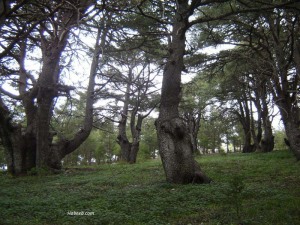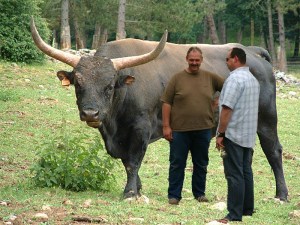Archive for the Timothy Wilkinson Category
The Giants of Palestine
Posted in anakim, bashan, Bible, david, edouard beaupre, genesis, giants, gigantism, height, john rogan, lahmi, literature, nephilim, og, Rephaim, robert wadlow, tallest, Timothy Wilkinson on April 21, 2010 by eternalthronechroniclesThe Climate of Ancient Palestine
Posted in Bible, Bronze Age, climate, Eternal Throne Chronicles, Iron Age, Judge of Israel, Lebanon, Levant, Mediterranean, Palestine, rainfall, Samuel, Sequim, Timothy Wilkinson on April 16, 2010 by eternalthronechroniclesThe Palestine I present in the Eternal Throne Chronicles is obviously a far lusher, forested, and climatically milder place than we find it to be at present. As with all things Biblical, there is a great deal of ongoing debate as to the ecological and meteorological conditions of Israel three millenia ago.
The ecology of modern-day Israel, though, is remarkably diverse. From the snow-covered slopes of Mount Hermon it is possible to view, in once glance, broad and barren deserts of yellow sand, lush green jungles, fertile valleys of checkered fields, plateaus and steppes of garigue, sandy Mediterranean beaches, majestic forests of oak and cedar and more. During the rainy season streams, lakes, and swamps appear temporarily all over northern Israel, and the fens south of Lake Hula once served as home to crocodiles and hippos. There are few places on earth with such variety of geography and climate within so small an area.
Many researchers believe that the dawn of the Iron Age in the tenth century resulted in a dramatic increase in the harvesting of timber, since the production and forging of iron require enormous quantities of fuel. Archaeology seems to support (or at least allow for) this interpretation. Israel was once a place of great forests, the remnants of which can still be glimpsed in a handful of preserves. (I have included below a few photographs of one of the surviving forests in present-day Lebanon, and a link to some further pictures). At some time the entire Plain of Sharon was a mighty, sprawling forest of oaks; the forests of Hereth, Mahanaim, Ephraim, and Bashan were all celebrated in scripture for their majesty and density. When forests are referred to by Bible writers, they are generally connected to an element of danger or mystery (David’s hiding place in 1 Samuel 22:5, the site (and cause) of Absalom’s death in 2 Samuel 18).
There is also some evidence that the current aridity of the Levant results in part from the logging of its mountains. When the land was still covered in trees, especially the hills and mountains of the Shephelah and Judah (which would have been taller three thousand years ago), clouds traveling inland from the Mediterranean would have been much more likely to drop their precipitation before evaporating over the Arabian Desert. This increase in rainfall, added to the fertility of a soil that had not been depleted by millenia of farming, erosion, and irrigation, add up to considerably more lush Israel.
The town in which I live in Washington averages only 15 inches of precipitation per year–almost 10 inches less than Jerusalem’s current average. But Sequim is surrounded by lush forests of fir, hemlock, and cedar covering the slopes of the snow-capped Olympics. Admittedly, there is more to climate than rainfall, but this fact does allow us to entertain the possibility that the Israel of King David’s day was a land with more in common with portions of northwest Washington today than with the barren hills of modern Judea.
The Philistines
Posted in Bible, Egypt, Eternal Throne Chronicles, giants, Judge of Israel, Palestine, Peleset, Philistine, Rephaim, research, Sea Peoples, Timothy Wilkinson on April 15, 2010 by eternalthronechroniclesMost modern scholars consider the Philistines of the Bible to have been one of the “Sea Peoples” that probably originated in Mycenae, Cyprus, and surrounding lands. Homer’s Iliad was a battle involving the Mycenaean Greeks of this time period. It is entirely possible that Odysseus and the Warriors who sacked Troy were the forefathers of (or at least related to) the Philistines who eventually settled in Israel.They traveled south (likely to escape a period of crop failures and famine), conquering peoples as they went. They destroyed the Hittite empire in Anatolia, ransacking its capital Hattusas and sacking Ugarit in Syria and the Cyprian capital, Enkomi. Fighting alongside the Libyans at the Nile delta, they were defeated by Pharaoh Merenptah. Returning to Egypt in the eighth year of Rameses III, the Sea Peoples were again defeated, but Pharaoh allowed them to settle in the north–in Palestine (the name of which comes from Philistine).
At this period in history, the Philistines become a significant problem for the people of Israel. Starting with the Battle of Aphek in the days of High Priest Eli and the childhood of Samuel the Prophet, Israel faced off against the Philistines repeatedly. Whether under the leadership of Samson, Samuel, or Saul, the Israelites could not gain a decisive advantage over these fierce coastal warriors.
It seems that a major reason for this was Philistine technological superiority–especially in the area of metalworking. In the book of 1 Samuel, chapter 13, Samuel reports that the Philistines had completely taken over the business of smithing in Israel. Samuel must have been referring here to iron working; archaeology substantiates the notion that the Philistines brought this technology with them from Anatolia, where the Hittites had been the first to master it.
The Philistines also owed their military greatness to their alliance with the most feared people of the eighth through the tenth centuries B.C.E.–the Rephaim. Although skeptics are quick to cry foul whenever “giants” are mentioned in ancient literature, there is solid, empirical data to support the notion that a race suffering/blessed with a form of gigantism was once prominent in ancient Palestine. Philistines used these super-warriors as champions, as in the famous case of Goliath.
“Philistine” has entered the English vernacular since the seventeenth century as a synonym for boorish or uncultured. Archaeology in recent decades has in many ways debunked this notion. the Philistines achieved high levels of artistic sophistication and a deep appreciation for aesthetic values. The fact that these qualities existed in a culture that also practiced child sacrifice, ritualized sex rites and barbarous military methods should not be surprising when one consider the obvious parallels in the “advanced” cultures of the world today.
The Deadliest Animal
Posted in Bible, Eternal Throne Chronicles, Prophet of Israel, Timothy Wilkinson on April 14, 2010 by eternalthronechroniclesThe people of ancient Israel lived in a world filled with wild and dangerous creatures. Just as today you are statistically likely to be related to someone who has died of cancer, in Palestine in the 10th century B.C.E. you were statistically likely to be related to someone who had been killed by a wild animal.
Man-eating lions haunted watering holes (2 Samuel 23:20); Syrian brown bears ate children (2 Kings 2:23); cobras, scorpions, and pit vipers sent many unwary travelers to their deaths. Of the ten deadliest animals on earth today (in terms of numbers of people killed per year), eight of them (dogs, bears, hippos, crocodiles, lions, leopards, scorpions, and cobras) were common in Palestine in Bible times.
But the deadliest animal in ancient Israel hasn’t killed anyone in centuries. It has been extinct since Roman times, the last of them having been hunted down in Europe by the Gauls. It is the aurochs, (Hebrew re’em), the wild bull.
The aurochs stood over six feet at the shoulder and was over ten feet long. Massive and muscled, it weighed in at well over a ton. It’s razor-sharp horns spanned nearly six feet—and it is one of the few creatures in history that deliberately hunted men. As far as I know, the aurochs and the elephant are the only herbivorores to do so.
English archaeologist Austen Layard wrote: “The wild bull, from its frequent representation in the bas-reliefs, appears to have been considered scarcely less formidable and noble game than the lion. The king is frequently seen contending with it, and warriors pursue it both on horseback and on foot.” (Nineveh and Its Remains, 1849, Volume 2, page 326) Julius Caesar wrote the following description of them: “[They] are scarcely less than elephants in size, but in their nature, colour, and form, are bulls. Great is their strength, and great their speed: they spare neither man nor beast when once they have caught sight of them.”
Today, there are no non-domesticated strains of bovines left. Even the deadly water buffalo, while it may live in the wild in some areas, is descended from domestic ancestors. It is hard for us to imagine what it would have been like to face an animal of the size, speed, and ferocity of the aurochs with nothing more than sword, spear, and short bow. From the standpoint of a Bronze Age warrior, these creatures were unstoppable.
Researchers believe that the closest representation of the aurochs alive today is an Asian breed of cattle called Gaur. I have included pictures below–one of gaur, and one of a bull Photoshopped to be the size of an ancient aurochs.
I would rather face a lion any day.
The Home Stretch
Posted in Bible, Christianity, Eternal Throne Chronicles, event, Judge of Israel, Old Testament, Prophet of Israel, Sequim, Timothy Wilkinson on April 12, 2010 by eternalthronechroniclesEditing has entered the home stretch. I hope to order my final proof on 24 May. If all goes well, I will hold my release party on 19 June and the book will become available for sale on that day as well.
Today also begins my pre-marketing schedule. I intend to keep my blog and Twitter updated daily. I will be using Twitter to share information regarding life in Bible times and details about Bible verses that I have encountered in my research for The Eternal Throne Chronicles. I will also begin marketing to bookstores.
I hope to be invited to join the North Olympic Library System’s Author Fair again this year on 22 May. (Unfortunately, this falls the day after Chelsey’s and my sixteenth wedding anniversary–what were you thinking, NOLS?)
Thanks for following!





